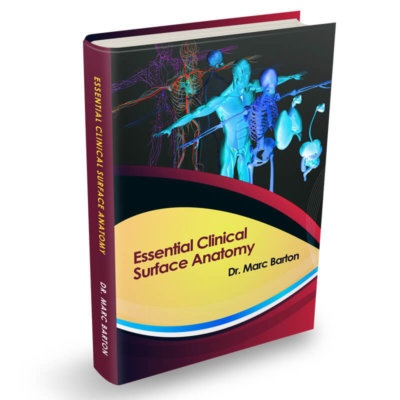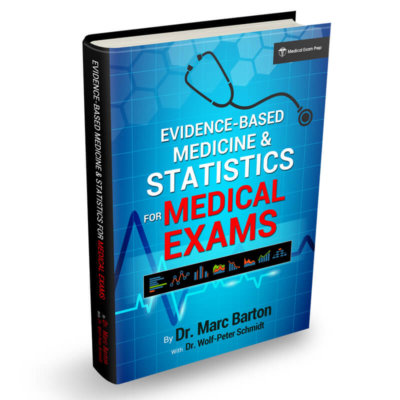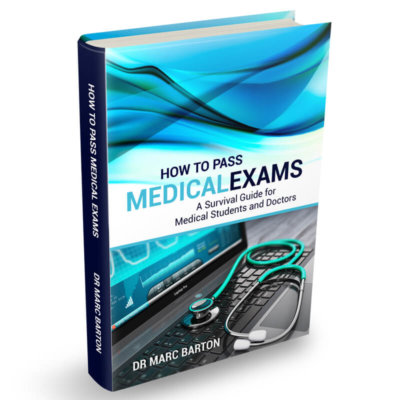Ischaemic bowel disease occurs when there is inadequate blood supply to the intestines, leading to mucosal injury, necrosis, and perforation if untreated. It is a life-threatening emergency with high mortality, particularly in cases of bowel infarction.
There are two main types:
- Acute mesenteric ischaemia – Small bowel ischaemia, commonly due to arterial occlusion.
- Ischaemic colitis – Large bowel ischaemia, usually non-occlusive and often transient.
Epidemiology
Ischaemic bowel disease is more common in elderly patients and those with vascular risk factors.
Acute mesenteric ischaemia:
- Incidence: ~12 per 100,000 per year.
- Mortality: ~50–80% in cases with bowel infarction.
- Common in those with atrial fibrillation, atherosclerosis and heart failure.
Ischaemic colitis:
- Incidence: ~16 per 100,000 per year, increasing with age.
- More common than acute mesenteric ischaemia but lower mortality (~10–15%).
- Common in those with hypotension, sepsis and chronic constipation.
Risk factors:
- Age >60 years.
- Atherosclerosis – Peripheral vascular disease, coronary artery disease.
- Atrial fibrillation – Increases embolic risk.
- Heart failure or shock – Reduces perfusion.
- Sepsis or dehydration – Leads to non-occlusive ischaemia.
- Coagulation disorders – Factor V Leiden, antiphospholipid syndrome.
- Recent surgery – Postoperative hypoperfusion risk.
- Medications – NSAIDs, vasopressors, oral contraceptives.
Anatomy
The blood supply to the intestines is primarily derived from the coeliac trunk, superior mesenteric artery (SMA), and inferior mesenteric artery (IMA). The distribution of these arteries determines which regions of the bowel are most vulnerable to ischaemia, particularly in cases of arterial occlusion or systemic hypoperfusion.
The foregut (stomach to proximal duodenum) is supplied by the coeliac trunk, which gives rise to:
- Common hepatic artery → Gastroduodenal artery → Superior pancreaticoduodenal artery → Supplies the proximal duodenum and head of the pancreas.
- Splenic artery and left gastric artery → Supply the stomach and part of the oesophagus.
The midgut (distal duodenum to proximal 2/3 of the transverse colon) is supplied by the superior mesenteric artery (SMA), which gives rise to:
- Inferior pancreaticoduodenal artery → Anastomoses with the superior pancreaticoduodenal artery, supplying the distal duodenum and head of the pancreas.
- Jejunal and ileal branches → Supply the small intestine.
- Ileocolic, right colic, and middle colic arteries → Supply the caecum, ascending colon, and transverse colon.
The hindgut (distal 1/3 of the transverse colon to the rectum) is supplied by the inferior mesenteric artery (IMA), which gives rise to:
- Left colic artery → Supplies the descending colon.
- Sigmoid arteries → Supply the sigmoid colon.
- Superior rectal artery → Supplies the proximal rectum.
Watershed areas are regions with dual arterial supply that are particularly vulnerable to ischaemia in low-flow states:
- Splenic flexure (SMA-IMA border) → Griffiths’ point.
- Rectosigmoid junction (IMA-hypogastric artery border) → Sudeck’s point.
- These areas are frequently involved in ischaemic colitis due to hypoperfusion.
Clinical relevance:
- Occlusion of the SMA: Causes acute mesenteric ischaemia, affecting most of the small bowel and proximal colon, leading to rapid infarction and high mortality.
- Hypotensive episodes: Can cause ischaemic colitis at the splenic flexure or rectosigmoid junction.
- Anastomotic pathways (e.g. between pancreaticoduodenal arteries) help maintain perfusion, but severe occlusion can overcome collateral circulation, leading to infarction.
Pathophysiology
Bowel ischaemia results in mucosal injury, oedema, and necrosis, which can progress to perforation and peritonitis if untreated.
Stages of ischaemic injury:
- Early phase: Reduced perfusion leads to mucosal injury and inflammation.
- Progressive damage: Prolonged ischaemia causes transmural infarction, necrosis, and gangrene.
- Late phase: Bowel perforation occurs, leading to peritonitis, sepsis and multi-organ failure.
Commonly affected areas include:
- Superior mesenteric artery (SMA) territory – Small bowel and proximal colon.
- Inferior mesenteric artery (IMA) territory – Watershed areas (splenic flexure and rectosigmoid junction).
Aetiology
|
Type |
Cause |
Pathophysiology
|
|
Acute mesenteric ischaemia
|
Embolism (50%)
|
Atrial fibrillation or cardiac thrombus leads to an embolus lodging in the SMA.
|
|
|
Thrombosis (20–25%)
|
Atherosclerotic plaque rupture causes acute arterial occlusion.
|
|
|
Non-occlusive ischaemia (20%)
|
Hypotension, shock or vasoconstriction reduces mesenteric perfusion.
|
|
|
Mesenteric venous thrombosis (5–10%)
|
Hypercoagulable states impair venous drainage, leading to congestion and ischaemia.
|
|
Ischaemic colitis |
Hypoperfusion
|
Low-flow states such as sepsis, dehydration, or shock result in watershed infarction, particularly at the splenic flexure and rectosigmoid junction.
|
Clinical features
Symptoms:
- Acute mesenteric ischaemia: Sudden onset of severe abdominal pain that is disproportionately intense compared to examination findings. Commonly associated with nausea, vomiting, diarrhoea and a history of atrial fibrillation or cardiovascular disease.
- Ischaemic colitis: Gradual onset of crampy left-sided abdominal pain, often accompanied by bloody diarrhoea. Frequently occurs after a hypotensive event.
Signs:
- Early acute mesenteric ischaemia: Minimal tenderness on examination despite severe pain; the abdomen may appear normal initially.
- Late acute mesenteric ischaemia: Development of peritonitis with guarding, tachycardia, shock and signs of sepsis.
- Ischaemic colitis: Localised tenderness, particularly in the left lower quadrant, with associated rectal bleeding and abdominal distension.
Key clinical clues:
- Pain out of proportion to examination findings is highly suggestive of mesenteric ischaemia.
- Rectal bleeding following a hypotensive episode is characteristic of ischaemic colitis.
- Rapid clinical deterioration indicates progression to bowel necrosis or perforation, necessitating urgent intervention.
Complications
Potential complications include:
- Sepsis and multi-organ failure – The leading cause of death.
- Bowel necrosis and perforation – leading to peritonitis and septic shock.
- Short bowel syndrome – If extensive resection is needed.
- Strictures or chronic ischaemia – Late complication in ischaemic colitis.
Investigations
Bedside tests:
- ECG – Look for atrial fibrillation.
- ABG – Raised lactate suggests bowel infarction.
Blood tests:
- FBC – Raised WCC suggests infection/sepsis.
- U&Es – To assess for dehydration and renal impairment.
- Lactate – Best early marker of bowel ischaemia (elevated in infarction).
- Coagulation screen – Consider hypercoagulable states.
CT angiography (CTA):
- The first-line investigation for suspected mesenteric ischaemia.
- It can reveal arterial occlusion, bowel wall thickening and pneumatosis (gas within the bowel wall).
CT abdomen with contrast:
- The preferred imaging modality for ischaemic colitis.
- Findings include segmental bowel wall thickening and the characteristic “thumbprinting” sign, which indicates mucosal oedema.
Colonoscopy:
- Considered if the patient is haemodynamically stable and ischaemic colitis is suspected.
- It may show mucosal oedema, ulceration and haemorrhage.
Management
Resuscitation and monitoring:
- Follow an ABCDE approach with continuous monitoring of vital signs and lactate.
- Administer high-flow oxygen and IV crystalloids (e.g. Hartmann’s) for aggressive fluid resuscitation.
- Insert a urinary catheter to monitor urine output and detect early shock.
Pharmacological management:
- IV broad-spectrum antibiotics (e.g. piperacillin-tazobactam 4.5g TDS or meropenem 1g TDS in penicillin allergy).
- Analgesia: IV paracetamol ± opioids, avoiding hypotension.
- Anticoagulation (IV heparin) in mesenteric venous thrombosis unless contraindicated.
Gastrointestinal support:
- Insert an NG tube for vomiting or bowel obstruction.
- Nil by mouth if surgery is anticipated.
Referral:
- Urgent surgical or vascular team review for suspected infarction or ongoing instability.
- Interventional radiology for embolic cases needing thrombectomy.
- Intensive care involvement in septic or haemodynamically unstable patients.
Definitive treatment:
- Acute mesenteric ischaemia: Requires emergency laparotomy with bowel resection if necrosis is present. In embolic cases, endovascular thrombectomy may be an option to restore blood flow.
- Ischaemic colitis: Managed with supportive care, including intravenous fluids, antibiotics and bowel rest. Surgery is indicated if there is bowel necrosis or perforation.
- Non-occlusive mesenteric ischaemia: Treatment focuses on reversing hypotension with fluid resuscitation and inotropes while avoiding vasoconstrictive medications that could worsen ischaemia.
- Mesenteric venous thrombosis: Managed with systemic anticoagulation, typically using heparin, to prevent clot propagation and restore venous drainage.
Prognosis
The prognosis depends on the type of ischaemia, how early treatment was commenced, and the extent of bowel damage:
- Acute mesenteric ischaemia: 50–80% mortality if infarction occurs, high risk of sepsis and multi-organ failure.
- Ischaemic colitis: 10–15% mortality, better prognosis with supportive care, but risk of strictures.
- Early diagnosis and treatment significantly improve survival by preventing infarction and reducing complications.
Header image used on licence from Shutterstock.
Thank you to the joint editorial team of MRCEM Exam Prep for this article.







Brilliant!